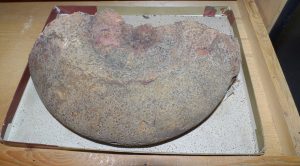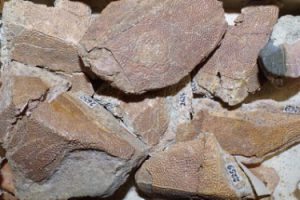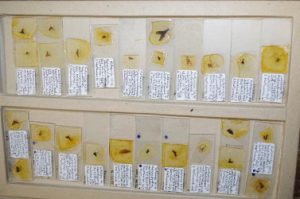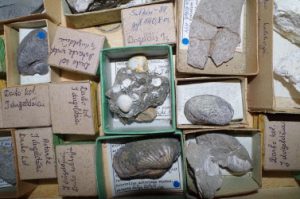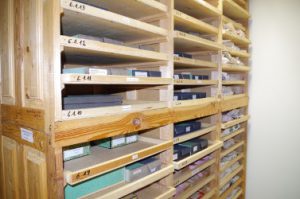
The Palaeontological Repository houses collections of significant to science fossils (petrified remains of plants and animals), numbering approximately 43,000 specimens of micro- and macrofauna. These are very important documents of the Earth’s history, witnessing the formation of the biosphere and its evolution during different stages of the geological past. The studied fossil species and genera serve as a steady benchmark for sediment age determination, geological cross-section correlation, formation of stratigraphic schemes, analysis of particular plant and animal species’ evolution, and characterization of the palaeoenvironmental status in the geological past. The repository stores the holotypes (a single type specimen of a particular organism species upon which the description of a new species is based) and paratypes (specimens of an organism on the basis of which the primary description of a species or subspecies is provided) found and described by Lithuanian scientists, as well as their rich working collections. The bulk of the stored specimens were collected from a very wide range of regions in the northern hemisphere and are described in monographs by palaeontologists from various geological institutions of Lithuania. Recognized as having a considerable international significance, these collections are used by scientists of Lithuania and other countries.
